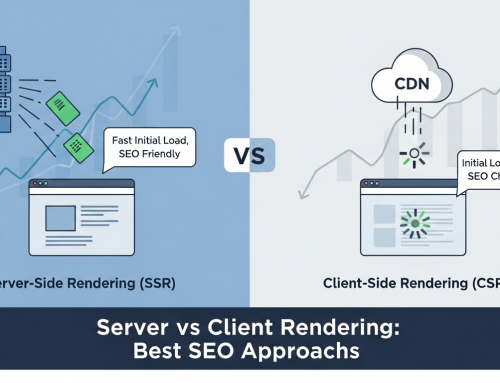A detailed website audit is a powerful tool to enhance SEO and boost your online presence. Here’s how you can conduct a comprehensive website audit to improve your SEO and ultimately drive more traffic to your site.
Introduction
In today’s digital age, having a strong online presence is crucial for businesses of all sizes. Search Engine Optimization (SEO) plays a pivotal role in driving organic traffic to your website, increasing visibility, and ultimately boosting revenue. One of the most effective ways to enhance your SEO efforts is through detailed website audits. A comprehensive audit allows you to identify and fix issues that may be hindering your website’s performance, ensuring that it meets the latest SEO best practices and delivers a seamless user experience.
What is a Website Audit?
A website audit is a thorough examination of your website’s overall health and performance. It involves analyzing various aspects of your site, including technical elements, on-page SEO, content quality, and off-page factors. The primary goal of a website audit is to uncover issues that could be affecting your site’s ability to rank well in search engine results pages (SERPs) and to provide actionable insights for improvement.
There are three main types of website audits:
- Technical Audit: Focuses on the technical aspects of your website, such as site speed, mobile-friendliness, and crawlability.
- Content Audit: Evaluates the quality, relevance, and performance of your website’s content.
- Off-Page Audit: Assesses your website’s backlink profile, social media presence, and overall online reputation.
Preparing for a Website Audit
Before diving into a website audit, it’s essential to prepare adequately to ensure a smooth and effective process.
Setting Clear Objectives
Define the specific goals you want to achieve with the audit. Are you looking to improve your website’s loading speed? Do you want to identify and fix technical SEO issues? Clear objectives will help guide the audit process and ensure you stay focused on your goals.
Tools and Resources Needed
Several tools can help you conduct a thorough website audit. Some popular options include:
- Google Analytics and Google Search Console
- SEMrush or Ahrefs for SEO analysis
- Screaming Frog SEO Spider for technical audits
- Moz for backlink analysis
Establishing a Baseline
Before starting the audit, gather data on your website’s current performance metrics. This baseline will help you measure the impact of your changes and track progress over time. Key metrics to consider include:
- Organic traffic
- Bounce rate
- Average session duration
- Conversion rate
- Backlink profile
Technical SEO Audit
A technical SEO audit focuses on the foundational elements of your website that affect its ability to be crawled and indexed by search engines. Here are the critical areas to examine:
Checking Site Speed and Performance
Site speed is a crucial factor in both user experience and SEO. Use tools like Google Page, Speed Insights and GTmetrix to analyze your website’s loading speed and identify areas for improvement. Optimize images, leverage browser caching, and minimize CSS and JavaScript files to enhance performance.
Ensuring Mobile-Friendliness
With the majority of internet users accessing websites via mobile devices, it’s essential to ensure your site is mobile-friendly. Use Google’s Mobile-Friendly Test tool to check if your website is optimized for mobile and make necessary adjustments to improve the mobile user experience.
Analyzing Website Structure and Navigation
A well-organized website structure helps search engines crawl and index your site more effectively. Ensure your website has a clear hierarchy, with a logical flow from the homepage to category pages and individual content pages. Use a sitemap to guide search engine crawlers and improve navigation.
Identifying and Fixing Crawl Errors
Crawl errors occur when search engines have difficulty accessing your website’s pages. Use Google Search Console to identify crawl errors and take steps to fix them. Common issues include broken links, server errors, and blocked resources.
Reviewing and Optimizing URL Structure
A clean and descriptive URL structure can enhance your website’s SEO. Ensure your URLs are short, descriptive, and include relevant keywords. Avoid using unnecessary parameters and special characters.
On-Page SEO Audit
An on-page SEO audit focuses on optimizing the elements within your website’s pages to improve their relevance and search engine visibility.
Assessing Keyword Usage and Placement
Analyze your current keyword strategy to ensure you’re targeting relevant and high-traffic keywords. Check keyword placement in critical areas such as title tags, meta descriptions, headers, and throughout the content. Avoid keyword stuffing and focus on providing valuable and informative content.
Optimizing Title Tags and Meta Descriptions
Title tags and meta descriptions play a significant role in attracting clicks from search engine results. Ensure each page has a unique and compelling title tag and meta description that includes relevant keywords and accurately describes the content.
Analyzing Header Tags and Content Structure
Header tags (H1, H2, H3, etc.) help organize your content and make it more readable for users and search engines. Use header tags to break up content into sections and include relevant keywords where appropriate. Ensure your content is well-structured and easy to read.
Evaluating Internal Linking Strategy
Internal links help search engines understand the structure of your website and establish a hierarchy of importance. Review your internal linking strategy to ensure you’re linking to relevant content and using descriptive anchor text. This not only improves SEO but also enhances the user experience.
Checking for Duplicate Content
Duplicate content can harm your SEO efforts by confusing search engines and diluting your ranking potential. Use tools like Copyscape to identify duplicate content on your site and take steps to consolidate or rewrite it.
Content Audit
A content audit evaluates the quality, relevance, and performance of your website’s content. High-quality content is essential for engaging users and improving SEO.
Evaluating Content Quality and Relevance
Review your existing content to ensure it provides value to your audience and aligns with their needs and interests. Check for accuracy, readability, and depth of information. Content that is outdated or irrelevant should be updated or removed.
Updating Outdated Content
Content that was once relevant may become outdated over time. Regularly review and update your content to ensure it remains accurate and useful. This can improve your website’s credibility and search engine rankings.
Identifying Content Gaps and Opportunities
Identify topics that are missing or underrepresented on your website and create new content to fill these gaps. Use keyword research and competitor analysis to discover new content opportunities and stay ahead of industry trends.
Analyzing User Engagement Metrics
User engagement metrics, such as bounce rate, average session duration, and social shares, can provide insights into how well your content is resonating with your audience. Use this data to identify high-performing content and areas for improvement.
Off-Page SEO Audit
An off-page SEO audit focuses on factors outside your website that influence its search engine rankings, such as backlinks and social media presence.
Reviewing Backlink Profile
Backlinks from reputable websites can significantly boost your SEO. Use tools like Ahrefs or Moz to analyze your backlink profile and identify high-quality backlinks as well as any toxic or spammy links that could harm your SEO.
Identifying Toxic Backlinks
Toxic backlinks can negatively impact your search engine rankings. Identify and disavow these links using Google Search Console to prevent them from affecting your website’s SEO.
Assessing Social Media Presence
A strong social media presence can enhance your website’s visibility and drive traffic. Review your social media profiles and engagement levels to ensure you’re effectively leveraging these platforms to support your SEO efforts.
Monitoring Brand Mentions and Reviews
Positive brand mentions and reviews can improve your online reputation and SEO. Use tools like Google Alerts to monitor brand mentions and respond to reviews promptly to maintain a positive image.
Audit Implementation
Once you’ve completed your website audit, it’s time to implement the changes. Here’s how to do it effectively:
Prioritizing Issues Based on Impact
Not all issues identified in the audit will have the same impact on your SEO. Prioritize the
most critical issues that will have the biggest effect on your website’s performance and address them first.
Creating an Action Plan
Develop a detailed action plan outlining the steps needed to resolve each issue. Assign responsibilities, set deadlines, and track progress to ensure the changes are implemented effectively.
Implementing Changes and Tracking Progress
Implement the necessary changes based on your action plan and monitor your website’s performance to track the impact. Use tools like Google Analytics to measure improvements in key metrics and adjust your strategy as needed.
Continuous Monitoring and Improvement
SEO is an ongoing process, and regular audits are essential to maintaining and improving your website’s performance.
Setting Up Regular Audit Schedules
Establish a schedule for regular website audits, such as quarterly or bi-annually, to ensure your site remains optimized and free of issues.
Using Analytics Tools to Monitor Performance
Continuously monitor your website’s performance using analytics tools to identify new issues and opportunities for improvement.
Adapting to SEO Algorithm Changes
Search engine algorithms are constantly evolving. Stay informed about the latest changes and adjust your SEO strategy accordingly to maintain your rankings and visibility.
Conclusion
Detailed website audits are a powerful tool for enhancing your SEO and driving more traffic to your site. By conducting regular audits and addressing identified issues, you can ensure your website remains optimized and competitive in the ever-evolving digital landscape. Start implementing website audits today to boost your SEO and achieve long-term online success.






